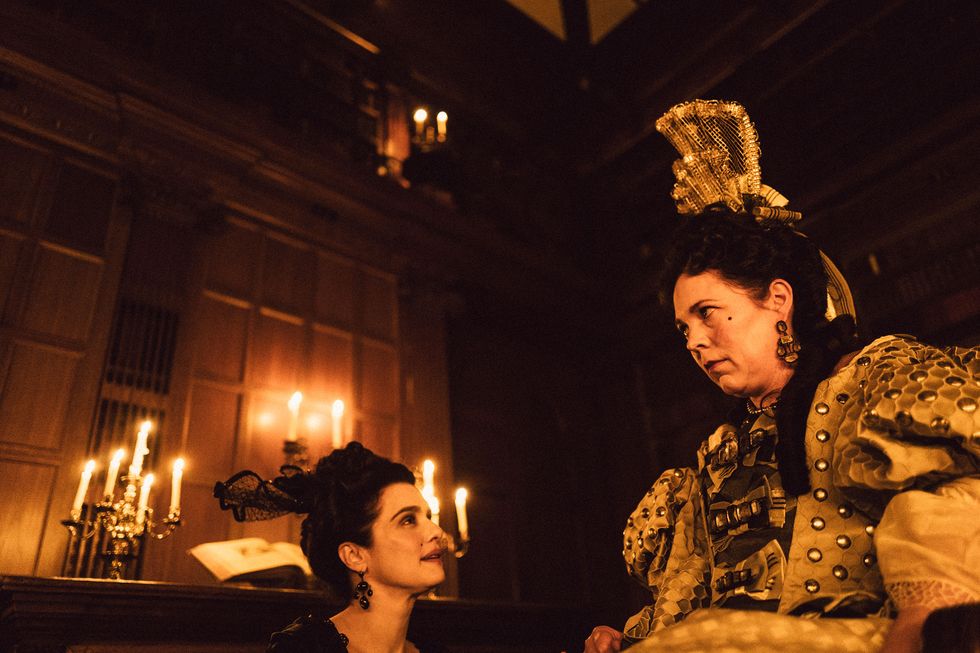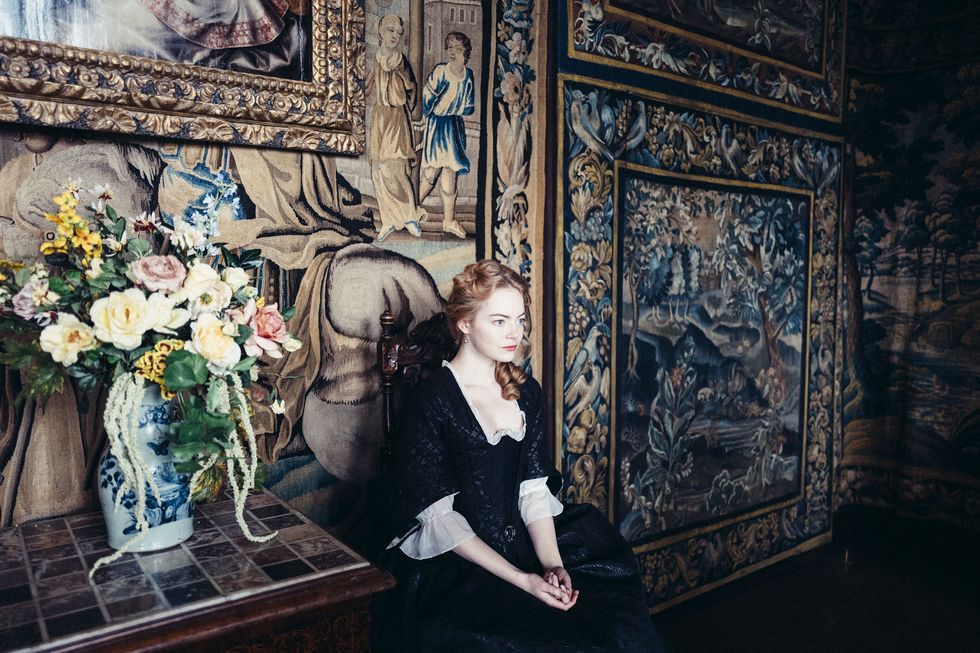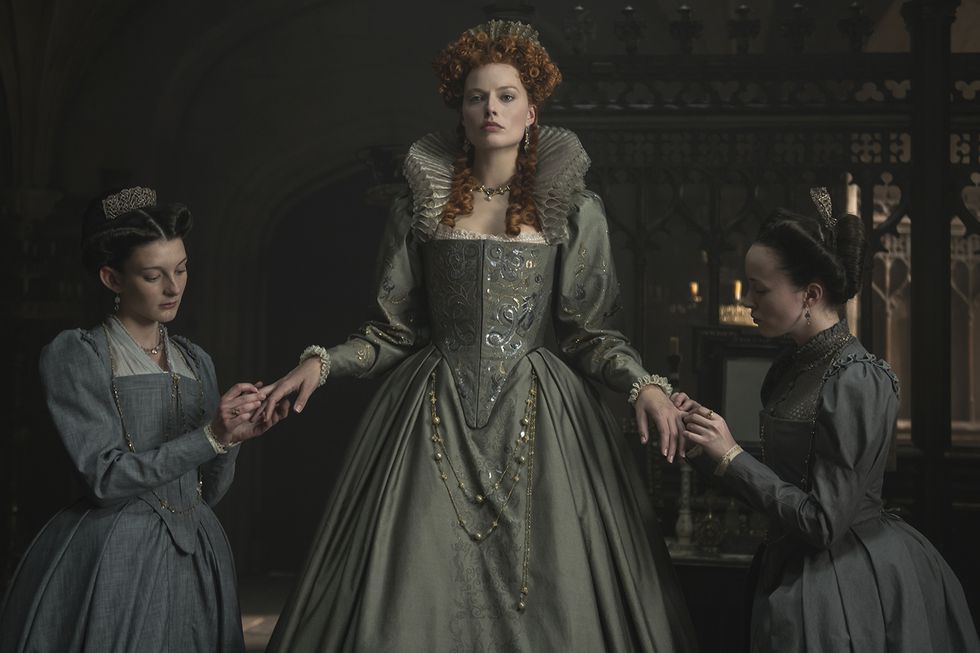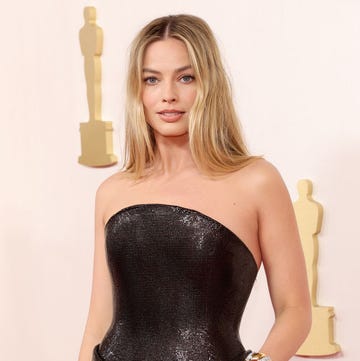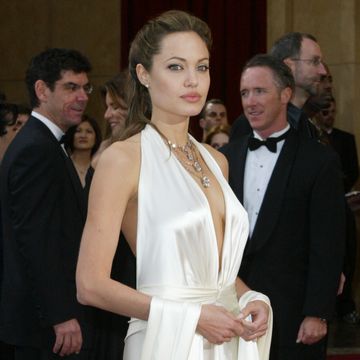With Yorgos Lanthimos' film The Favourite dominating the 2019 awards season, a previously forgotten, often overshadowed and arguably unknown English queen has been thrust back into the spotlight.
Queen Anne, the last of the Stuart monarchs, reigned from 1702 until her death aged 49 in 1714. Unlike Queen Elizabeth I, Henry VIII and Charles I, little is known about her in the modern day and her life story has rarely been brought into the present - until now.
In the dramedy, Anne is portrayed wonderfully by Olivia Colman, who has already been recognised with a Golden Globe and is up for Best Actress at the BAFTAs and Oscars. The film focuses on the relationships that Anne had with two of her ladies-in-waiting, Sarah Churchill, the Duchess of Marlborough, played by Rachel Weisz, and Abigail Masham, who is portrayed by Emma Stone.
The Favourite's credentials and critical reception speaks for itself. Clearly, Queen Anne's story is an interesting one, suggesting that this royal doesn't really deserve her obscure place in history. She was, after all, the first Queen of Great Britain, following England and Scotland signing the Acts of Union in 1707. However, as is so often the case with historical re-tellings, artistic license often prevails when it comes to historical accuracy and, in this case, The Favourite is no different. So, let's take a closer look at what we do know about Queen Anne.
Her forgettable legacy
The reason for her legacy effacing from mainstream history could be down to two things: Anne reigned during a very heated political era, plus her regime was bookmarked by much more 'exciting' monarchs and time periods, says Elaine Chalus, professor of British history and head of department at the University of Liverpool.
"It was a particularly complicated period of time, politically," she explains. "In some ways, she has been underplayed as someone who was relatively weak and at the mercy of her ministers due to the political divisions, along with the fact she’s female and was ill throughout most of her reign."
What instead dominates the early 18th century in British history is the 'Age of Party'. This refers to the emergence of the two party political system in the UK - the Whigs and the Tories - and their battle for governance.
According to Chalus, both the time period and the monarch herself have not been regarded as interesting to study, with historians instead focusing their resources on other supposedly more interesting historical events which took place either side of Anne's reign.
"It's not seen as exciting as the Glorious Revolution (of 1688), the French Revolution (1789) or the life of Georgina, Duchess of Devonshire and the 1784 election. As the last of the Stuarts, Anne also comes right before the Hanoverians and the Georgians," Chalus explains. "There have been parts of her life which have been studied, but she has not attracted that same level of attention, even from historians."
Biographer Ophelia Field suggests that Sarah, the Duchess of Marlborough, bears some responsibility for the way that Queen Anne is remembered. The two, as documented in the film, fell out - the details of which were consequently publishing her memoirs.
"It was Sarah, after the relationship had soured, who turned Anne into the caricature of ‘insipid heaviness’ that makes her appear a minor figure beside, say, Elizabeth I or Queen Victoria," she writes in her book about Sarah, The Favourite.
Anne's ill health
Sadly, part of this disinterest could be due to the personal legacy Anne left behind. She's not the intriguing 'Virgin Queen' nor does she possess Mary Queen of Scots' brave and disruptive reputation. Anne is very often quite harshly depicted as "frumpy" and overweight, with a focus on her gout and illness. In an interview with The Sunday Times, Colman told historian Janina Ramirez she put on two and a half stone for the role, with portraits of Anne (often painted with a double chin) serving as inspiration for her characterisation.
Anne's story is not regarded as "triumphant" either. Her personal life was famously blighted by the tragic loss of 17 children through miscarriages, stillbirths and infant deaths (her longest living child, William, died aged 11) .
The effects of these deaths on Anne is represented in The Favourite by her obsession with 17 rabbits which replace the lost children - a symbolism, Chalus tells us, that did not actually happen. In the film, Anne's trauma is epitomised in several scenes, notably through Colman's initial joy transforming into an emotional breakdown after seeing children playing musical instruments. At other times, Anne is interpreted as so thoroughly depressed, she is suicidal. Given what she endured - as well as the pressures of running a country - Chalus says possibly Anne did have depression but, given the illness' fairly recent understanding and acceptance by the medical community, "trying to psychologically diagnose from a modern perspective" is difficult.
"Certainly, she's desperately unhappy at times and often very sad," Chalus explains. "There's physical exhaustion from the continuous repeat of miscarriage, stillbirth, miscarriage, stillbirth... that process must not have only been physically draining, but mentally too."
Historians studying the Queen more recently have considered whether the ill health which plagued her life could have been the autoimmune condition lupus, which lists depression as a symptom. In the film, we see the Queen's health decline from regular gout flare ups - requiring the constant massages of her ladies-in-waiting - to extreme exhaustion and partial facial paralysis by the end.
The Queen's romantic life and sexuality
In the film, as Sarah and Abigail both compete for power and influence they manipulate the monarch through their sexuality, with both characters engaging in sex scenes with Anne (Colman recently said snogging Weisz is like "winning the lottery"). What evidence is there for the Queen being bisexual? We know she was married to Prince George of Denmark for 25 years up until his death in 1708 and historians roundly perceive them to have had a happy and content relationship.
However, there were passionate letters written from the monarch to Sarah - referenced in the film - ridden with affectionate nicknames and amorous outpourings. As Field writes in her book, Anne often spoke of Sarah "seeing into her heart" and regularly complained of loneliness when Sarah was not around. "I had rather live in a cottage with you than reign empress of the world without you", she wrote in 1692. "I long to be with you again and tis impossible for you ever to believe how much I love you except you saw my heart," and "I have the same sincere tender passion for you as ever," were other phrases uttered in the correspondence.
These letters came to be used by Sarah as a threat when the two women fell out and Abigail replaced Sarah as the favourite. According to Historic Royal Palaces, it was Sarah's political allies (the Marlborough's were big supporters of the Whig party) who spread rumours that Anne and Abigail's friendship actually involved "dark deeds at night". There were also rumours from those close to Anne describing her friendships with her female confidants as "unnatural".
But, how do these rumours reconcile with what else we know about the Queen? Chalus tells us there's "no historical evidence that Queen Anne was involved in any active lesbian affairs".
"She was a woman of her time, very religious, she prayed a number of times a day. Her marriage was monogamous, as far as anyone can tell, with continuous pregnancies as we've said. She was prudish, too," Chalus says, referring to a tale that Anne was once most offended when her shoulder was exposed in a portrait on a coin. "While it is impossible to rule [the affairs] out categorically, it seems highly unlikely. Both Anne’s personal character and the nature of her living arrangements - royal residences were forever bustling with servants and courtiers, and teeming with gossip - mitigate against it."
However, Anne being a "woman of her time" could also serve to explain why the letters between Sarah and Anne were so emotive and in some ways eroticised even if there were no sexual relationships taking place.
"What is going on at this point in the 18th century, and is often debated by historians who look at this era, is this business of romantic language being used among women who are close friends. It's highly emotive and passionate."
While the first thought that might spring to mind when its said the Queen had "unnatural" relationships with close female friends such as Abigail might be sexual implications, Chalus suggests this could instead refer to something else. In those days, the monarch was elevated to such a hierarchy - practically believed to be just one step away from the divine - that forming close allegiances with people outside of the inner circle may have been what was deemed "unnatural". Abigail, after all, started off as a palace maid before being promoted to Lady of the Bedchamber and then favourite - an unelected and unaccountable powerful position which was feared by much of the British public, Chalus tells us.
"[The 'unnatural’ reference] could mean there's something sexual going on but it's much more likely, given the time period, that it was about class barriers and letting someone become too close to the body - by that, I mean in a political sense - of the Queen."
How much did she care for politics?
Considering Anne's supposedly eventful personal life and the exciting period in history during which she reigned, why is she largely considered a forgotten Queen? Is it because she didn't really reign? In the film, Anne's lack of interest in politics is highlighted when she appears to be far more focused on racing her lobsters.
Chalus believes it is "wrong" to say Anne wasn't involved with the political happenings of the time. "She is a Queen, at a difficult time, a Stuart and in control. The key thing to realise with Anne is that even if she's ill, to a large degree, she's the one in control, she's not being played. She's Queen of a country which is at war so she is involved. She has a strong sense of what's going on, she sits in the House of Lords and is actively involved. She's not a political non-entity."
Perhaps this is most evident in the way that both of Anne's famous favourites were largely irrelevant once the Queen was done with them. Sarah was banished and, far from being a part of high-class society like she wanted, Abigail faded into obscurity after Anne's death.
Thanks to Colman and Lanthimos, we can now re-visit Anne's legacy and decipher for ourselves just how alluring the Queen was. All the while bearing in mind the tendency for Hollywood to, quite literally, sex up history.


